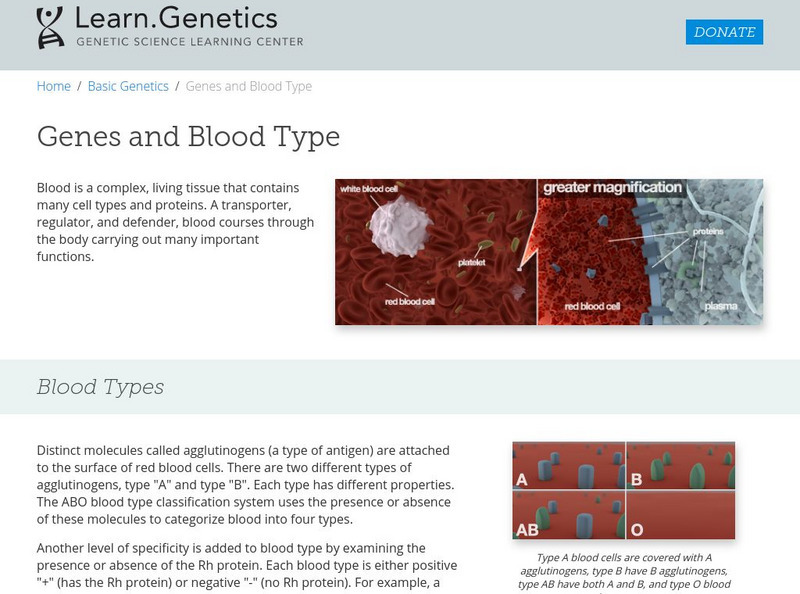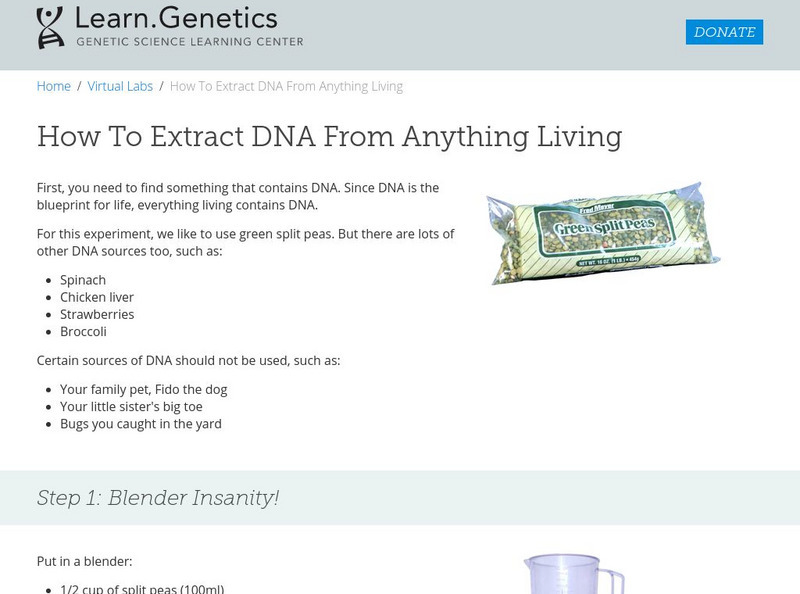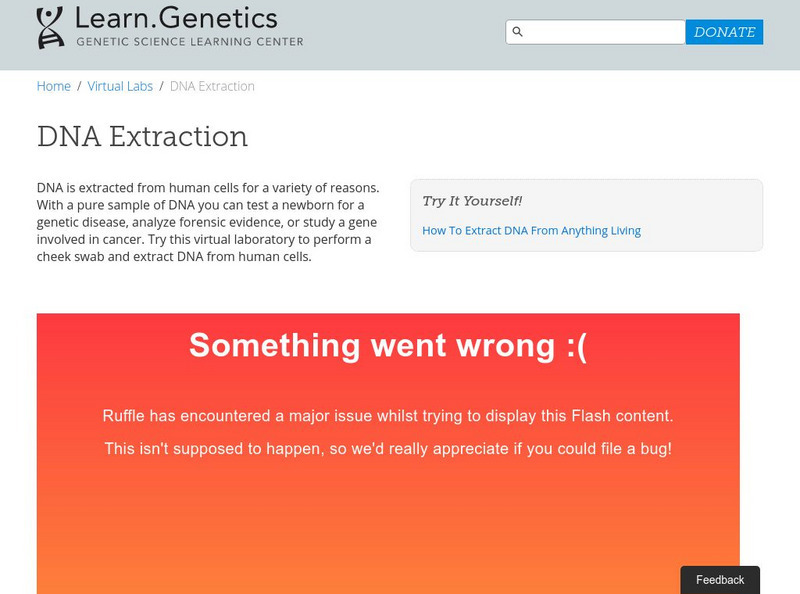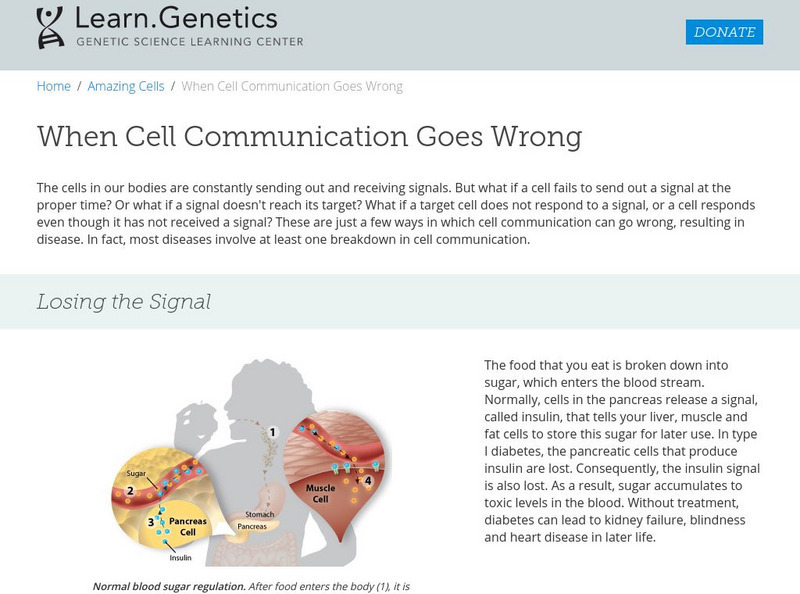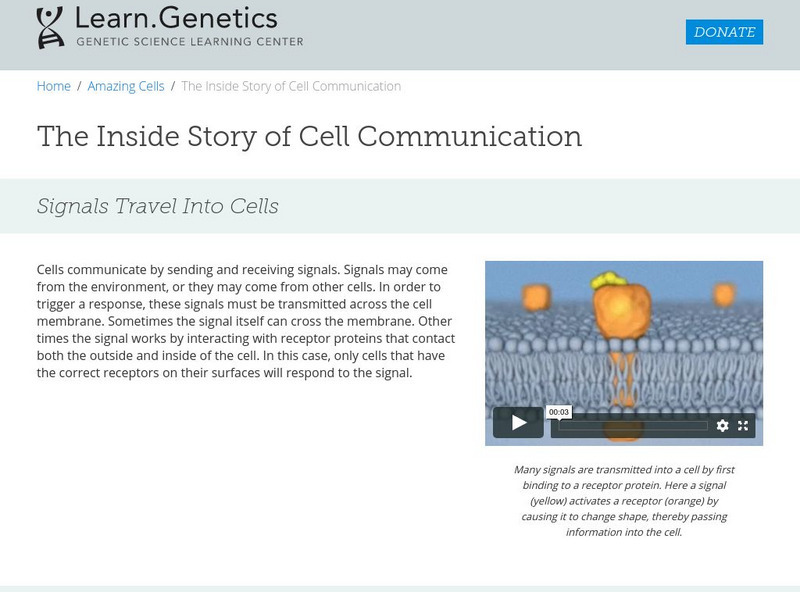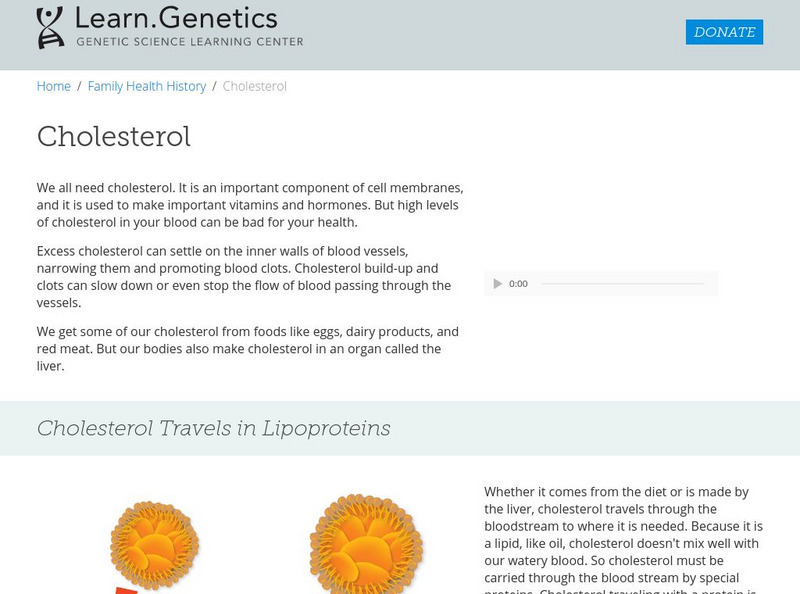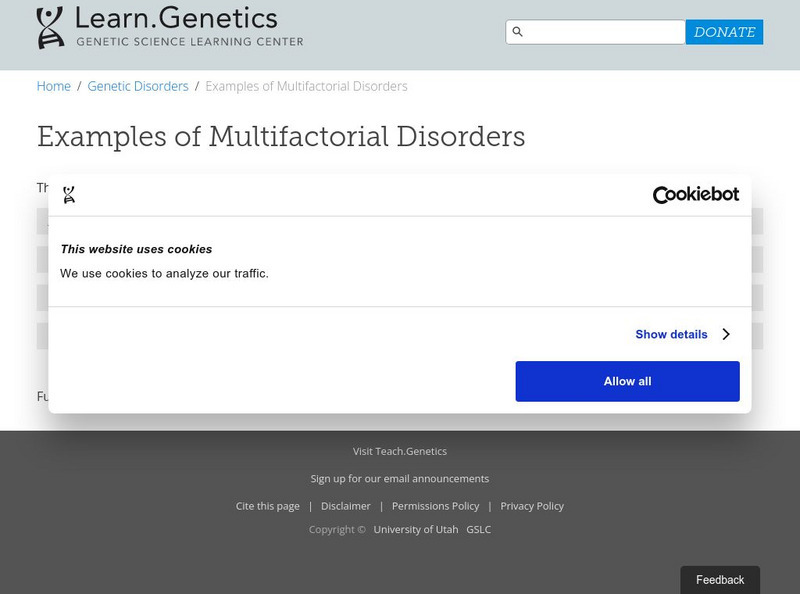University of Utah
University of Utah: Genetic Science Learning Center: Membranes Organize Cellular Complexity
An explanation of how membranes organize the different parts of a cell into compact, specialized units.
University of Utah
University of Utah: Genetic Science Learning Center: Examples of Single Gene Disorders
Use this drop-down menu to explore singe gene disorders such as Cystic Fibrosis, Huntington Disease, Sickle Cell, and more. Learn the symptoms and features of the disease, how to treat and/or manage the disease, and links to additional...
University of Utah
University of Utah: Genetic Science Learning Center: Examples of Aneuploidy
Only a few types of aneuploidy are compatible with life. Use this drop-down menu to understand more about common genetic disorders resulting from monoploidy and polyploidy, such as Down Syndrome. Learn features of the disorder, see how...
University of Utah
University of Utah: Genetic Science Learning Center: Examples of Unbalanced Chromosomal Arrangements
Learn about disorders caused by a deletion of DNA from one of the chromosomes. This article explains causes, inheritance, symptoms, diagnosis, and treatment of Cri-du-Chat Syndrome and Williams Syndrome.
University of Utah
University of Utah: Learning Center: learn.genetics: Making Sn Ps Make Sense
Find out how tiny variations in DNA can help scientists predict humans' response to drugs or to disease risk.
University of Utah
University of Utah: Genetic Science Learning Center: Heredity and Traits
The Genetic Science Learning Center presents the world of heredity and traits including activities to better comprehend the science, clear explanations of aspects of heredity, and an interactive opportunity.
University of Utah
University of Utah: Genetic Science Learning Center: Single Gene Disorders: Cystic Fibrosis
Click on "Cystic Fibrosis (CF) to learn about this is a disorder that affects respiration and digestion. This article explains causes, inheritance, symptoms, diagnosis, and treatment.
University of Utah
University of Utah: Learn Genetics: Genes and Blood Type
For a concise summary of human blood types, this is a great resource. Discussion includes the topics of genotype, phenotype and agglutinins. There is also a nice pictorial table that summarizes the three blood types.
University of Utah
University of Utah: learn.genetics: How to Extract Dna From Anything Living
An experiment to extract DNA from green split peas, spinach, chicken liver, strawberries, and broccoli using simple household reagents.
University of Utah
University of Utah: Genetic Science Learning Center: What Causes Dna Mutations
Provides a great overview of DNA damage from agents such as ultraviolet light, nuclear radiation, and certain chemicals. Includes DNA strand drawings.
University of Utah
University of Utah: Learning Center: learn.genetics: Great Salt Lake Food Web
Visualize how energy transfer takes place in two linked food chains, and how it demonstrates the interdependence organisms of the Great Salt Lake.
University of Utah
University of Utah: Learn Genetics: How to Extract Dna From Anything Living
Four steps is all it takes to get DNA out of a variety of living things. The requirements include a blender, meat tenderizer, isopropyl alcohol, and a test tube. Sources of DNA include but are not limited to split peas, strawberries,...
University of Utah
University of Utah: Learn Genetics: Colorful Electrophoresis
Make electrophoresis easy by following the steps of this relatively simple lab. Instead of using DNA, you will use food coloring which shows up very well in the gel.
University of Utah
University of Utah: Learning Center: learn.genetics: Wrong Cell Communication
Learn about the many ways cell communication can be disrupted, and how this problem sometimes results in disease.
University of Utah
University of Utah: Genetics Learning Center: learn.genetics: Cell Communication
Learn how signals travel within cells, and from cell to cell as a form of cellular communication.
University of Utah
University of Utah: Genetic Science Learning Center: The Evolution of the Cell
Learn about the endosymbiotic theory. This theory explains the evolution of cells from a mitochondria and chloroplast working together in a symbiotic relationship to the current cell structure.
University of Utah
University of Utah: Learn. Genetics: Good and Bad Cholesterol
Explains the difference between high density and low density cholesterol, and how their levels affects one's risk of heart disease.
University of Utah
University of Utah: Learn Genetics: Calculating Genetic Risk
How can someone estimate their chances of developing a genetic disease? Probe some of the tools used to investigate disease inheritance, and find out why it is difficult to accurately predict what family members will get certain genetic...
University of Utah
University of Utah: Learn. Genetics: Lifestyle Choices and Risk
Overview of how to make the right lifestyle choices by maintaining a healthy weight through good nutrition and exercise.
University of Utah
University of Utah: What Are Some Issues in Stem Cell Research?
A very nice presentation and explanation of the issues and questions related to stem cell research. Not a lot of detail, but a great place to start framing the questions.
University of Utah
University of Utah: Genetic Science Learning Center: Examples of Multifactorial Disorders
Use this drop-down menu to explore genetic conditions that involve variations in multiple genes, often coupled with environmental causes (multifactorial disorders). Examples of disorders include breast and ovarian cancer, colon cancer,...
University of Utah
University of Utah: learn.genetics: Finding a Gene on the Chromosome Map
Play the role of a scientist and piece together the genetic puzzle to determine the gene responsible for a disorder.
University of Utah
University of Utah: Learn Genetics: Cell Size and Scale
Students read an article that explains the applicability of scale in the biological sciences field.
University of Utah
University of Utah: Learn Genetics: Genetic Counselor
What do genetic counselors do? What kinds of questions do they answer? These are two of the questions that are addressed by this article. The site also has links to help you locate genetic counselors.









